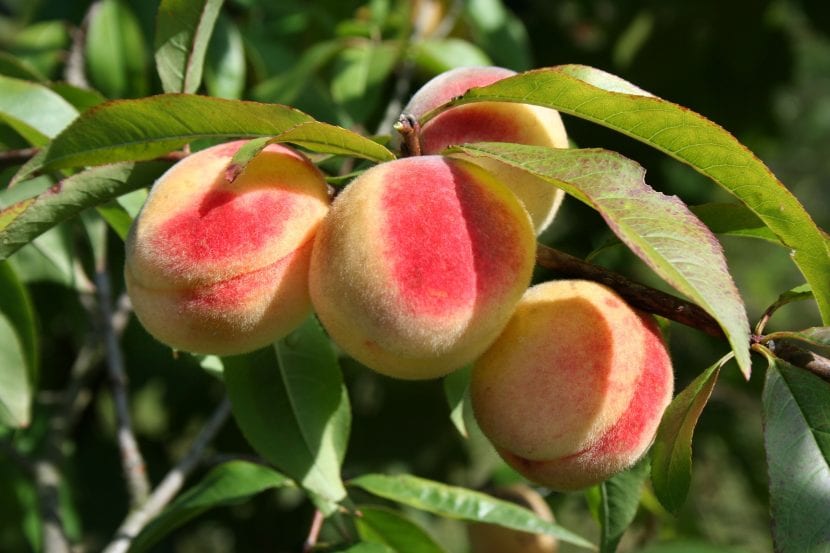
The PrunusAll of them are magnificent, but there are some that are cultivated more for their high ornamental value than for their fruits. Although this is not the case peach tree. Whether it is in flower or producing its fruits, it is one of the most interesting species of the genus.
So, if you want to have a decorative and really useful tree, get a peach tree. We take care of telling you how to take care of it 🙂.
Origin and characteristics
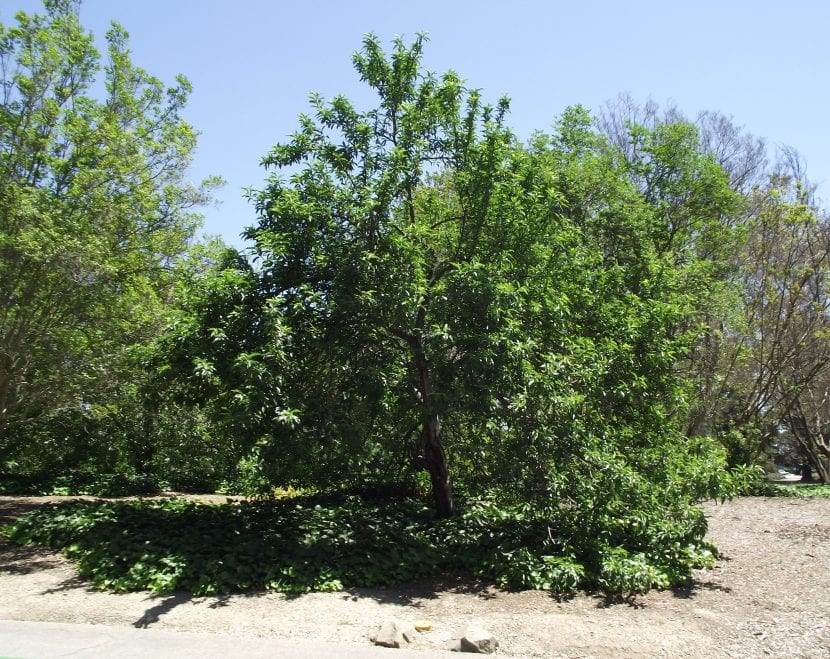
Our protagonist is a deciduous fruit tree -It loses its leaves in autumn- originally from Afghanistan, China and Iran whose scientific name is Prunus. It is popularly known as peach or peach tree. Reaches a height of 6-8 meters. The leaves are oblong-lanceolate or elliptical, serrated, green in color. The flowers are solitary and with numerous bracts (modified leaves that look like petals). The fruit is an edible drupe It measures 4 to 8cm in diameter that contains a single seed which is toxic and does not have to be consumed under any circumstances since it contains cyanide.
Subspecies
There are two main subspecies:
Prunus persica var. platycarp
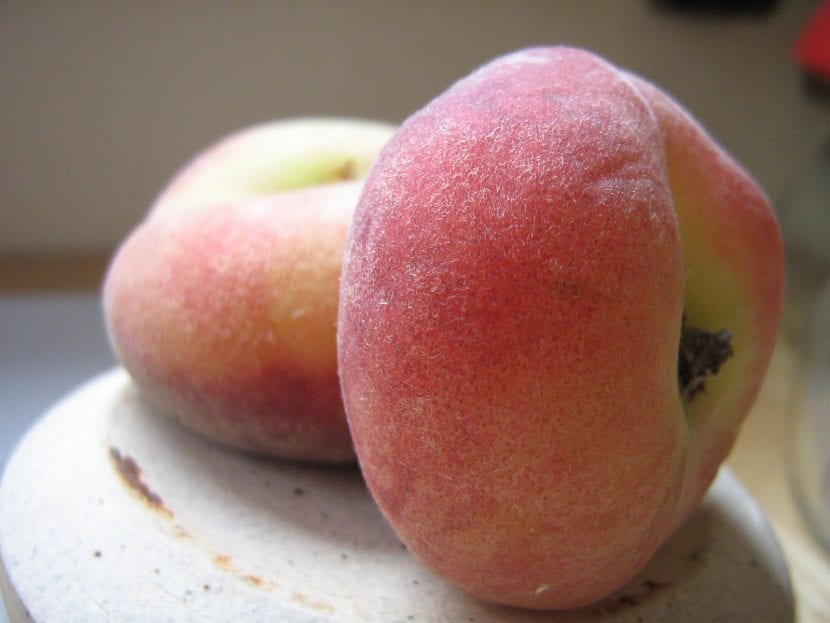
It is known as Paraguayan or Paraguayan. It comes from a mutation in the peach tree. The fruit is flat, with velvety skin.
Prunus persica var. nectarine
It is known as nectarine or nectarine. It comes from a mutation in the peach tree. The fruit has a more or less globose shape, with a smooth skin which is not attached to the pulp.
Varieties
- Precocious peaches (appear in May and last until July):
- With white pulp and hairy skin:
- armgold
- Alexander
- marybalnca
- Iris
- Royal Gold
- Big White
- With yellow or pink pulp, hairy skin and with the pulp detached from the bone:
- Cardinal
- Dixiered
- Spring crest
- Spring lady
- Springtime
- Early Maycrest
- Flavor Crest
- Queen crest
- Red haven
- Fair haven
- With white pulp and hairy skin:
- Mid-season (they appear at the end of July and last until September):
- September yellow
- baby gold
- Gallur
- sudanell
- Mountain Gold
- Yellow pavia
- Jerome
- San Lorenzo
- Late (they appear in September and last until December):
- Admirable
- October yellow
- malvenda
How do you take care of yourself?
If you want to have a specimen in your garden or orchard, we recommend that you provide it with the following care:
Location
It is important that you place your peach tree outside, in full sun. Although it does not have aggressive roots, we recommend planting it at a distance of about 3-4 meters from the house or walls so that it can have an excellent development.
Earth
- Garden: it must be fertile, well drained and with a pH of 6 to 7.
- Flower pot: can be grown in a container with holes using universal growing medium (you can get it here).
Irrigation
Frequent. It has to be watered 3-4 times a week in summer and somewhat less often the rest of the year.
Subscriber
From spring to autumn it must be paid with organic fertilizersand guano, herbivorous animal manure or humus. Of course, it is important to use liquid fertilizers if the tree is in a pot since otherwise it would complicate drainage, which could lead to suffocation of the roots.
Planting or transplanting time
In spring, after the risk of frost has passed.
Multiplication
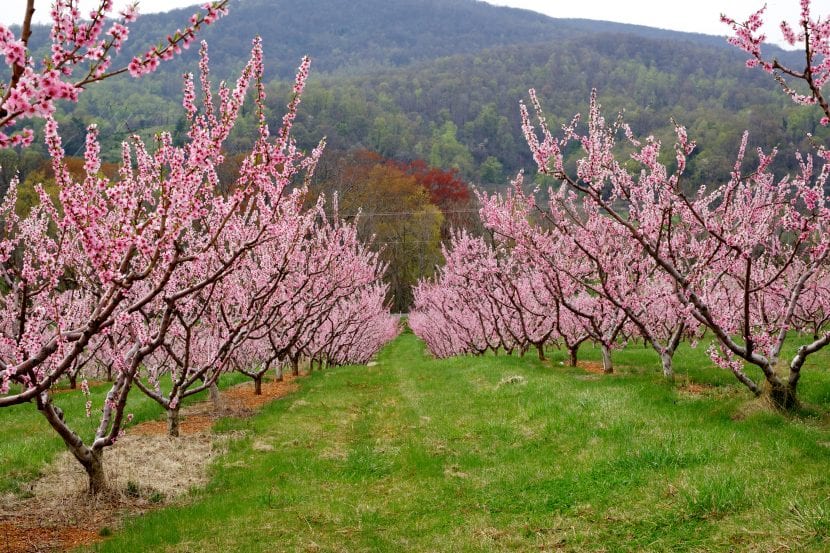
Seeds
Peach tree seeds they are sown in autumn in a pot with holes of about 10,5cm in diameter with substrate for seedlings (you can buy it here). Keeping it moist - but not waterlogged - will germinate throughout the spring.
Cuttings
To multiply by cuttings or cuttings cut a 30-35cm long branch in spring, impregnate the base with homemade rooting agents and plant it in a pot that will be placed in semi-shade with substrate for seedlings. After a month it will emit its own roots.
Grafts
The varieties multiply by bud grafting in spring. Here We explain how to do it.
Pests
- Red spider: it is a mite whose appearance is very similar to that of spiders but smaller. Causes discoloration of the leaves. It is easy to identify as it produces cobwebs. It is fought with acaricides or with neem oil (you can buy it here).
- Aphids: they are parasites of about 0,5 cm of yellow, brown or green color that feed on the cells of the leaves and the flower buds. They are fought with yellow colored sticky traps (like these from here).
- Fruitfly: it is a fly whose larvae eat all the fruit. You have more information at this article.
Management
- Roya: it is a fungus that causes the appearance of reddish bumps on the leaves. It is fought with fungicides or sulfur.
- Powdery mildew: it is a fungus that causes the appearance of a network of whitish filaments on the leaves that end up looking like mold. It is also fought with fungicides or sulfur.
- Tumor or galls of the neck and roots: they are caused by bacteria. There is no treatment.
Harvest
It will depend on the variety, but it is usually harvested when the peach feels firm to the touch and has already acquired its proper color.
Rusticity
The peach tree resists even -20ºC, but it is not suitable for tropical climates.
What uses does it have?
Ornamental
It is a very ornamental tree that with minimal care you can decorate the garden or orchard. Plus, since it doesn't have invasive roots, you won't have to worry about a thing.
Peach bonsai
The peach tree is a tree that works well as a bonsai. In fact, it is quite easy to find bonsai or bonsai projects of this species. If you dare to get one, its care is as follows:
- Location: outside, in full sun.
- Substratum: 100% akadama or mixed with 30% kiryuzuna.
- Irrigation: frequent. The substrate must be prevented from drying out.
- Subscriber: from spring to autumn with a specific liquid fertilizer for bonsai (like this one from here).
- Transplant: every two years, in spring.
- Style: vertical formal, forest, literati. You have more information about styles here.
- Pruning: branches that are out of the design must be cut and those that are growing too much at the end of winter must also be trimmed.
Culinary
The fruit is edible. Once peeled, it is consumed as a dessert and sometimes also as a dinner.. Its nutritional value per 100g of fresh food is as follows:
- Carbohydrates: 9,54g
- Sugars: 8,39g
- Fiber: 1,5g
- Fat: 0,25g
- Proteins: 0,91g
- Water: 88,87g
- Vitamin A: 16μg
- Vitamin B1: 0,024mg
- Vitamin B2: 0,031mg
- Vitamin B3: 0,806mg
- Vitamin B6: 0,025mg
- Vitamin C: 6,6mg
- Vitamin E: 0,73mg
- Vitamin K: 2,6μg
- Calcium: 6mg
- Iron: 0,25mg
- Magnesium: 9mg
- Phosphorus: 20mg
- Potassium: 190mg
- Sodium: 0mg
- Zinc: 0,17mg
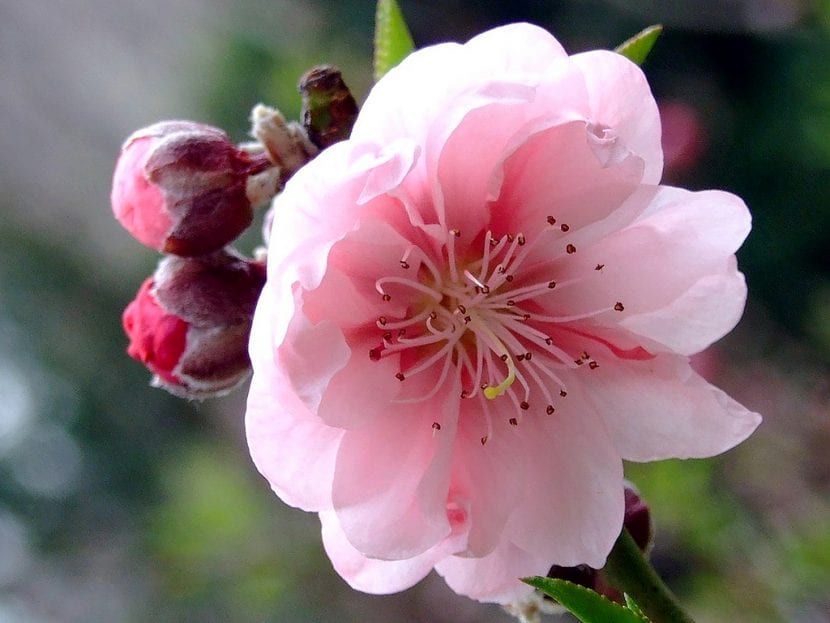
And with this we are done. What did you think of all that you have learned about the peach tree?
My peach tree bore fruit two years ago, all the leaves fell off and it has been without a leaf for two years. What can be caused this?
Hello Josefa.
You may have suffered from overwatering, or the opposite, you may have been thirsty at some point.
Anyway, if two years have passed and you have not taken any leaves, I recommend you scratch the 'younger' branches a little, or even cut a little to see how they are. If it is dark brown or black, there is nothing to do.
Greetings.